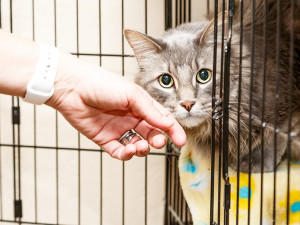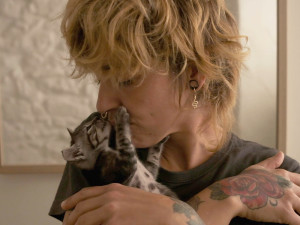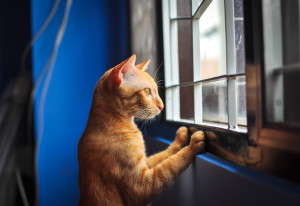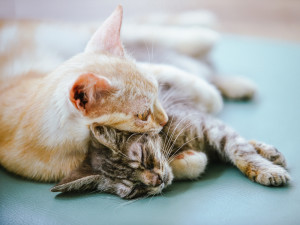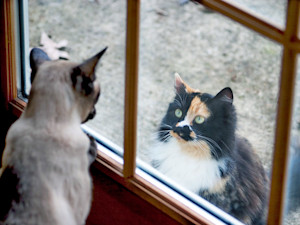Everything You Need to Know Before Adopting a Cat From Abroad
Adopting internationally? Here’s what to expect
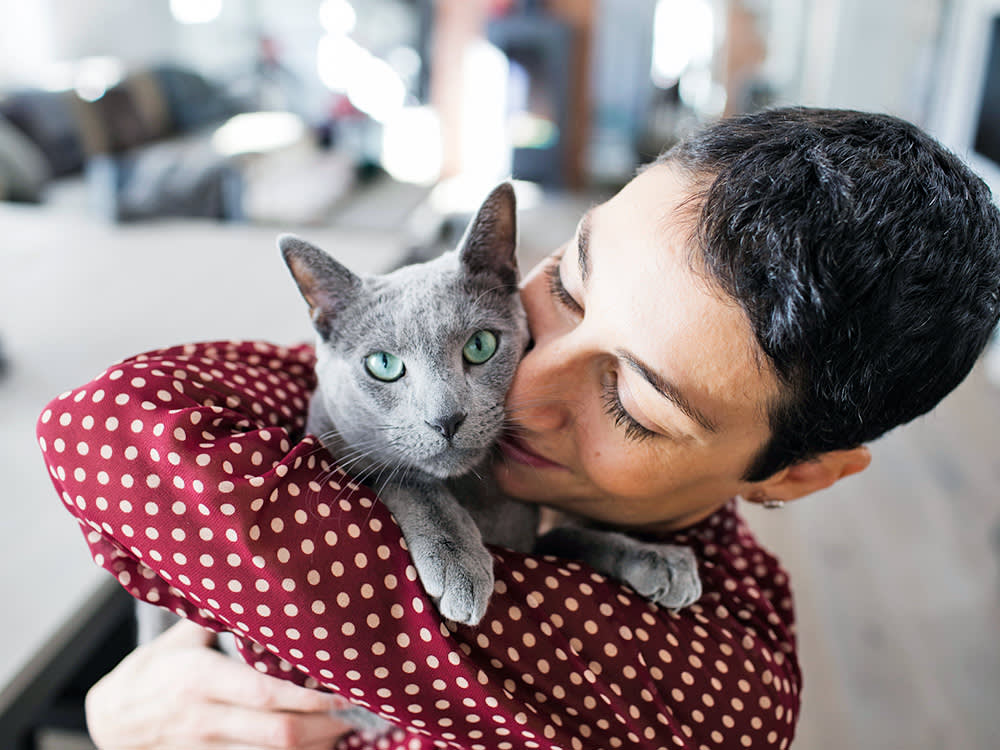
Share Article
So you’ve fallen in love with the cat loitering around your Greek holiday apartment, or a one-eyed street survivor from Dubai has stolen your heart via a Facebook post. Maybe you’ve already welcomed a cat from abroad into your home, or perhaps your finger is hovering over the ‘apply now’ button on a foreign rescue’s website.
A growing number of UK pet parents are adopting cats from far-flung places, motivated by heart-wrenching rescue stories and a desire to give a home to a cat in desperate need of love and care.
According to the 2024 Cats Protection Cats and Their Stats (CATS) UK annual reportopens in new tab, two percent of the total cat population in the UK was acquired from overseas sources, rising to four percent for those acquired in the last 12 months. 65,000 cats were imported during 2024, up from 50,000 in 2023.
Why international cat adoption can come with behavioural challenges
While international cat adoptions are often deeply rewarding, they can also come with unique challenges. As a feline behaviourist, I’m supporting an increasing number of clients who have adopted their cats from abroad. From the city streets of the Middle East to the beaches of the Mediterranean, adoptees often display problem behaviours, which is a welfare concern and can be upsetting for cat parents who have dedicated a huge amount of time and effort and made a considerable financial and emotional investment to get them to the UK.
The majority of these cats have experienced psychological trauma, have had little to no socialisation, and are accustomed to a very different environment from the domestic home they've ended up in. As a result, they often struggle to adapt to indoor living, and this can lead to behaviour problems.
Understanding trauma in overseas rescue cats
Most cats adopted from abroad weren’t born in a loving home. According to ex-pat Helen Rose, who runs Whisker Warriors Spainopens in new tab, the cats she rescues and re-homes to the UK from the municipal pound in Murcia have been “collected from the streets, in bins, in boxes, a few from hoarding situations, or abandoned.”
Cats from these backgrounds are unlikely to have had positive experiences with humans or been habituated to a domestic environment during the sensitive period, a critical early socialisation window, occurring between 2–7 weeks of age. This is when kittens learn that humans, other animals, sounds, smells, objects and experiences are nothing to be feared. Miss it, and you’re likely to have a cat who is fearful of people, scared of unfamiliar stimuli and may never fully relax in an indoor home.
Then there’s the travel – to reach their new home, they often spend hours in a crate in a van, ferry or the hold of a plane, eventually arriving in a new country where the sounds, sights and smells are completely alien to them.
Common behavioural problems in foreign rescue cats
These challenging backgrounds often manifest as extreme anxiety and fearfulness or frustration, inter-cat and/or human-directed aggression, house soiling or spraying, and destructive or compulsive behaviours, such as scratching furniture, over-grooming or excessive vocalisation.
Many cats have also suffered emotional trauma. “We’ve even had one cat who was glued to a box and left beside a bin, and a litter of kittens with their ears cut into the shape of teddy bear ears,” Rose tells me.
Health issues that affect behaviour in overseas cats
A cat‘s behaviour doesn’t happen in a vacuum; it’s intrinsically linked with health, and pain is often the cause or a contributing factor to behaviour problems. “Cats generally arrive in bad condition, whether it’s malnutrition, ear and eye infectionsopens in new tab, congenital disorders, flea and tick infestations, colds and flus, fungal issues, or severe traumatic injuries such as fractured legs and hips,” says Helen.
What to expect from your international rescue’s health
The behavioural effects of physical or emotional trauma can persist even after a cat has received veterinary care. For example, a cat who has experienced pain while urinating or defecating may continue to house soil, as they associate the litter tray with discomfort. Or a cat who experienced starvation or had to compete for food may meow constantly to solicit titbits even though they’re now fed regularly.
How to help your international rescue cat adjust
Helen explains that, “Some cats will adapt to their new home immediately and be a lap cat in seconds, others could take a long time.” So, what should you do when your new family member arrives from Morocco, immediately disappears under your bed and hisses whenever you approach them? You need to give them time and space.
Creating the perfect sanctuary room setup
Create a sanctuary room – somewhere small, quiet and low-traffic. Think spare bedroom rather than kitchen or lounge. Fill it with all their key resources: two litter trays, water and food stations, cosy beds, high perching places, and hiding places.
A pheromone diffuser, such as Feliway Optimumopens in new tab, will also help them to feel more secure and relaxed in an unfamiliar environment. Giving them time to settle in this space will help prevent sensory overload.
The 3/3/3 Rule for international cat adoption
Cat Gager runs Cat’s Cats Rescue, rehoming Egyptian street cats in the UK, and uses the 3/3/3 rule: advising adopters to expect their new family member to take “three days to decompress, three weeks to settle and start showing their personality, and three months to feel at home.”
Building trust with your anxious rescue cat
When your new family member arrives, your first instinct may be to pick them up for a cuddle and smother them with kisses, but avoid overwhelming them with affection. They’re likely to be stressed, anxious and fearful, so give them time to recover from their journey and get accustomed to the sights, sounds and smells of their new home before you start interacting with them or trying to introduce them to other people or pets.
Initially, sit quietly in their room reading a book and let them come to you on their terms. You want to become a calm, predictable presence who gives them choice and control rather than forcing eye contact, cornering them or picking them up. Build positive associations by offering treats and toys. If they’re too anxious to approach, a wand toy will allow them to interact at a distance, and you can toss treats away from you until they gain the confidence to come closer.
Cats thrive on routine and a familiar environment, so feed and play with them at the same time each day, spot clean their sanctuary room, always move slowly and calmly, and speak softly. Predictability builds trust, trust builds confidence, and confidence builds connection, strengthening the cat-human bond.
If you already have resident cats or dogs, don’t just open the door and “let them work it out” – that’s a recipe for stress and potential injury. Introduce them gradually, starting with scent-swapping, before moving on to visual introductions through a barrier, only progressing to shared space when everyone is calm and relaxed in each other’s presence.
Should you adopt a cat from abroad? Pros and cons
Some British cat welfare organisations have voiced concerns about the rise in international adoptions. These include the risk of importing exotic parasites, such as E. multilocularis tapeworms or zoonotic diseases, such as rabies, and whether importing cats is the best use of resources when there are thousands of cats languishing in UK rescues, rehoming centres and foster homes.
Benefits of international cat rescue
That doesn’t mean adopting from overseas is wrong. Welcoming a cat from overseas into your home can be one of the most fulfilling things you do. As Helen says, “Many of the cats we home in the UK haven’t stood a chance in Spain (some have been in a pound for three years), so you are saving a life and giving an overlooked cat a real future.”
Risks and challenges to consider
All this does highlight the importance of making sure that the rescue you’re adopting from is legitimate, transparent about any health or behavioural issues, adheres to welfare standards when transporting cats, and that cats are legally imported with the necessary paperwork, health checks, microchip and vaccinations.
Don’t be afraid to ask questions and trust your gut. Rescues should also vet potential adopters to ensure they’re the right match for a particular cat. Gager tells me, “Our applications and home checks are very thorough. Our questions range from trying to understand what level of cat care and behavioural knowledge adopters have to what they’d do if they go away on holiday. We provide them with realistic expectations on their new cat to make sure they fully understand their decision.”
But it’s important to recognise that adopting a cat from abroad isn’t a fairytale. You need to accept that they may need support to overcome behavioural challenges, be patient, respect their boundaries and create an environment where they feel safe enough to form a relationship with you on their terms.
And when they do? When the cat that has lived under your bed for three months slow blinks at you and wanders over to sit just a little closer – that moment will be golden.

Claire Stares, BA (Hons), MA, PG Dip Clinical Animal Behaviour
Claire Stares is a feline behaviourist with a PG Diploma in Clinical Animal Behaviour from the University of Edinburgh Royal (Dick) School of Veterinary Studies. She’s dedicated to helping guardians and their cats overcome behavioural problems and thrive so that they can enjoy life together. A cat lady since babyhood (her first word was cat!), she has over 20 years of experience living and working with cats in homes, rescue environments and veterinary practices. A passionate advocate for training cats for enrichment and cooperative care, she practices what she preaches with her five cats: three rescued Domestic Shorthairs, Bimble, Bertie and Katie, a Siamese called Daisy Mae, and a Maine Coon named Horatio. When there isn’t a feline companion asleep on her laptop, she writes books and articles for various publications.
Related articles
![A hand reaching towards a cat peaking out of a cage.]()
10 Questions to Ask a Rescue Centre About an Adoptable Cat
From medical history to adoption fees to litter preferences, here’s everything you need to know
![Blonde woman with hand tattoo kissing her gray kitten]()
A Step-by-Step Guide to Adopting a Cat
From where to begin looking to how to prepare your home for the new arrival
![orange cat looking out window]()
Is Your Cat’s Separation Anxiety Ruining Their Life and Yours?
Why your cat freaks out when you’re away (and how to help)
![two bonded kittens snuggling]()
Why You Should Adopt a ‘Less Adoptable’ Cat
Here’s why bonded kitties, senior cats and felines with FIV make just as amazing pets as any other
![]()
Should My Kitty Be An Indoor Or Outdoor Cat?
All the info you need to make this crucial decision
![Red cat with squinted eyes laying in a basket closeup]()
6 Ways Your Cat Could Tell You They Are in Pain
Here are all the way your kitty is trying to tell you they’re hurting

